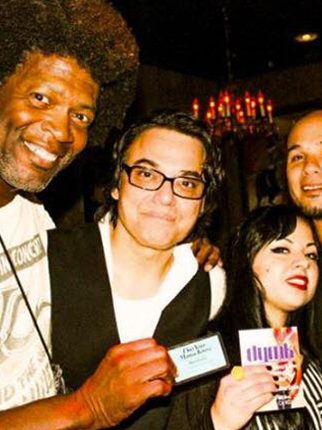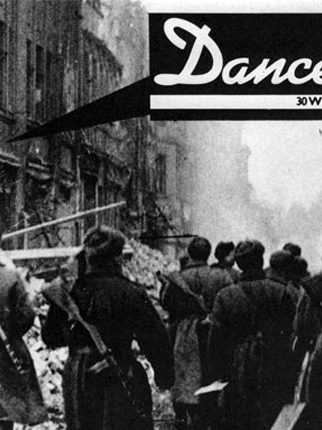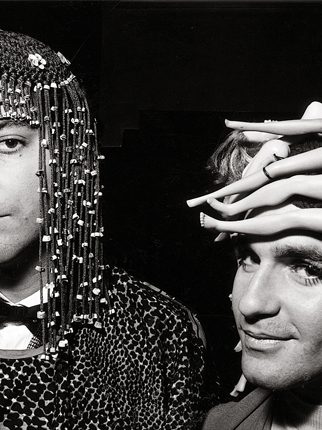New York Nightlife Gone: The Gallery 1972–77
A true pioneer of the art of DJing, Nicky Siano started young and burned brightly. His party, the Gallery, along with David Mancuso’s the Loft, set a template for what an underground dance music party could be. Created in a Manhattan loft space, the Gallery was an environment designed and built by Nicky and his brother Joe, an architectural engineer. It was there that Nicky pioneered beat-matching, blending and EQing to create new levels of sonic drama, and he did it on three Thorens turntables and a Bozak mixer (that means no backspinning and limited pitch control). He started going out at an early age and was by his own admission a “music fiend.”
“I was 17–18, and at that point in your life, you have tremendous energy and focus. I knew what I wanted—a place to dance—and I knew I wanted to play the records and have things a certain way. The rest was problem-solving.” —Nicky Siano
“I was listening to Montavani,” recalls Nicky. “He was this composer and orchestra leader [who] had very lush arrangements. I was obsessed by his palette of sounds. I was also getting schooled by my brothers in the world of rock music. Laura Nyro’s compositions became a big deal for me.”
Nicky got his first major gig at a club in midtown called the Roundtable, where he would often DJ five to seven nights a week.
“Bowie, Mick Jagger, Grace Jones—they all found their way there. But the party wasn’t about celebrity; it was about the core crowd dancing their asses off.”
“It was this big ballroom space, and I loved it, but I knew I needed to do more than play records. I knew I needed to have my own club. I needed to have control over the sound and the lighting and the ambiance; right away I could sense that was essential,” says Nicky. “My brother’s girlfriend took me to the Loft, and I was blown away by how David [Mancuso] had things set up—subtle lighting textures that changed with the music, the friends-and-family vibe, class-A audio equipment with real fidelity.”
In February of 1972, Nicky, Joe, and companion Robin Lord opened the Gallery in a warehouse space on West 22nd. When he needed help with the sound system, Nicky zeroed in on one name: legendary sound designer Alex Rosner.
“My brother had gotten some money in an accident settlement, so we made a business plan and started work,” says Nicky. “Every time I admired a sound system around town, it said Alex Rosner on it. Hell, one day we went ice-skating at Rockefeller Plaza and found that he had done the sound there.”
“We are throwing a party. Our every gesture—from the door to the décor to the sound—matters. You want everyone to go to another level, and it starts from the moment you invite them in.”
“Alex had these Altec A7s,” Nicky continues, “and we had these carved-out window spaces where they would fit. There would be a nice reflected sound.” Alex also came up with the first crossover unit for Nicky, allowing control of the bass and tweeters on separate knobs. Rosner also ran pink noise through the system and flattened it, it was a parametric EQ approach commonly used for theaters, but Nicky insisted on doing it and it changed the dynamic of the system. “The EQing that we got really made the system resonate—it changed the relation the sound had to the room and corrected the flaws in the acoustics of the space.”
Having blown the majority of their budget on sound, Nicky and his crew did the rest of the work themselves. Joining them in helping set up and decorate were two young guys named Frankie Knuckles and Larry Levan. “Frankie introduced me to Larry, brought him around. He was at F.I.T. then, a fashion kid. We started living together, and I would show him different things on the turntables. We would hang out at night and play records and work on the space.”
The success of the parties attracted a strong fashion following: Calvin Klein, Willie Smith and Giorgio di Sant’ Angelo all came through. “We had this great mix of people coming every week, so of course the fashion people wanted to be part of it. Bowie, Mick Jagger, Grace Jones—they all found their way there,” recalls Nicky. “But the party wasn’t about celebrity; it was about the core crowd dancing their asses off. It was a very welcoming environment. I used to say to the staff, ‘Remember, we are throwing a party. Our every gesture—from the door to the décor to the sound—matters.’ The idea that you would be rude or indifferent to people that you need and want to help create this thing confounds me. You want everyone to go to another level, and it starts from the moment you invite them in.”
“You know the phrase ‘Turn this motherfucker out?’ That started at the Gallery. Imagine 700 people chanting that at four in the morning. The walls shook!”
After 18 months at 22nd street, the party moved to a larger space downtown on Mercer Street, where it could accommodate the growing crowd. Nicky was playing from midnight to 7 or 8 am every Friday and Saturday, pushing the crowd to huge peaks and then taking them higher as the night wore on. Footage of the party shows the crowd in an almost religious rapture, singing verses as Nicky cut the music, then erupting as he brought it back in. “I am proud to say people came to my party to seriously get down. It went off, pure madness! You know the phrase ‘Turn this motherfucker out?’ Well, that started at the Gallery. Imagine 700 people chanting that at four in the morning. The walls shook!”
Nicky moved the crowd with a gritty mix that could best be described as proto-disco. “I was raised on James Brown. The music had to have a funky vibe—a street vibe. Remember, the word ‘disco’ wasn’t even being used yet. I liked jazz and gospel. I liked the idealism of the music of the ’60s. I wasn’t big on what would become the chintzy side of disco. I liked songs that had meaning and a groove.”
Songs by artists such as the Isley Brothers and the Undisputed Truth became staples, along with jams like Patti LaBelle’s “What Can I Do For You,” the Trammps’ “Love Epidemic,” and Eddie Kendricks’ “Girl You Need a Change of Mind.” Nicky began using two copies and extending the break of the song, playing it over and over, or playing the songs in close synch so that a phrase would be repeated (soon after, a guy named Kool Herc would start doing something similar in the Bronx). The intent was to build tension and heighten the drama of the music. “Everything was done as a way to take the crowd to a new place, to create some ecstasy in the moment [and] leave people feeling transformed.”
In its five-year run, the Gallery and Nicky certainly had many memorable nights, and his innovation and mentoring continue to have a lasting effect on every aspect of dance music culture. If David Mancuso created a purist sonic sanctuary and family context (more on that soon), Nicky added a theatricality and established a dynamic where the DJ became the performer/shaman responsible for leading the dancers to new states of engagement and euphoria.
Released earlier this year, Love Is the Message: A Night at the Gallery 1977 is not so much a documentary about the early club scene, but an actual experience of the scene.




